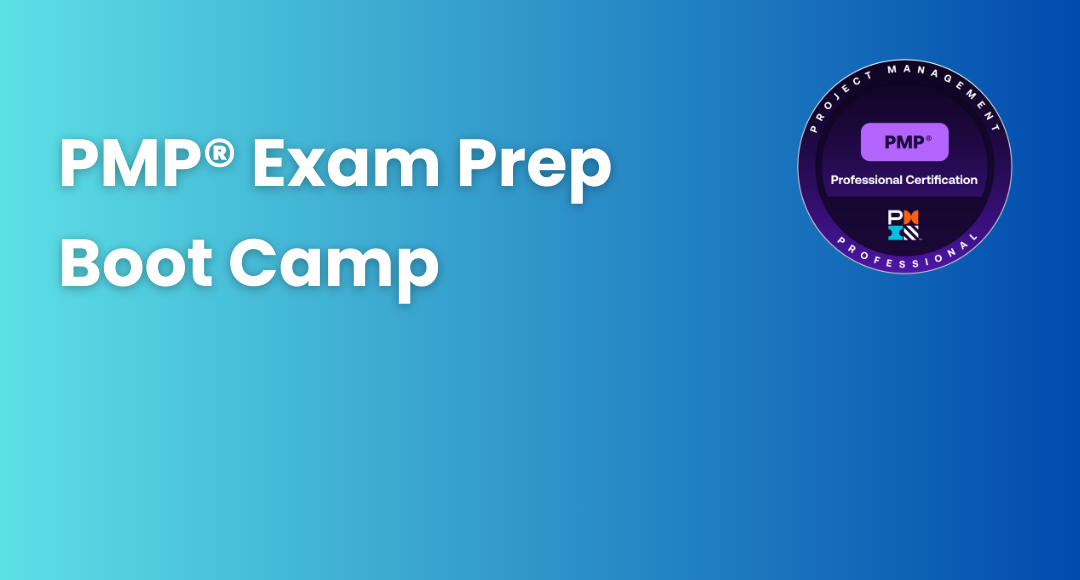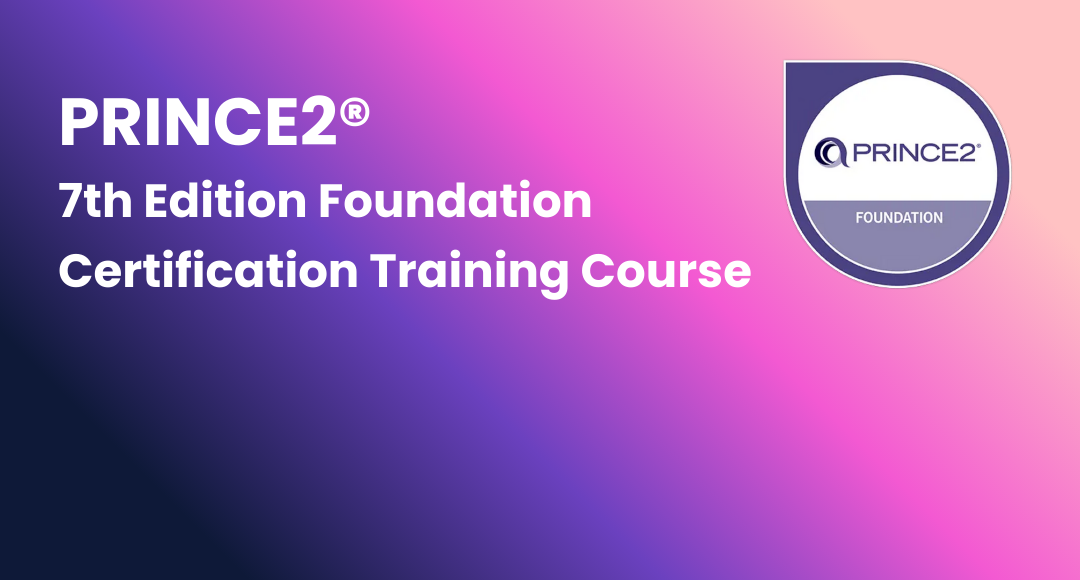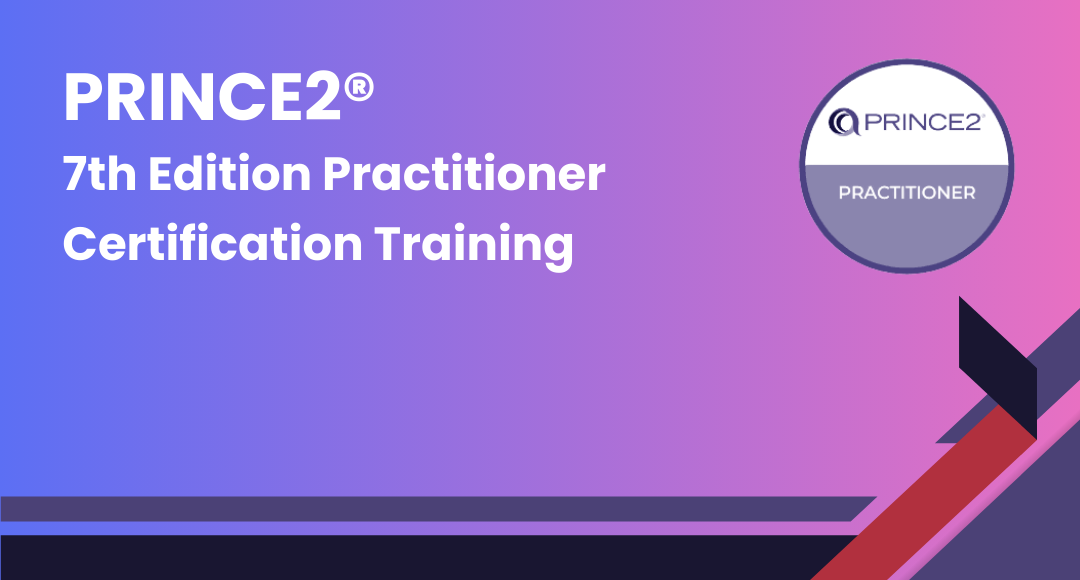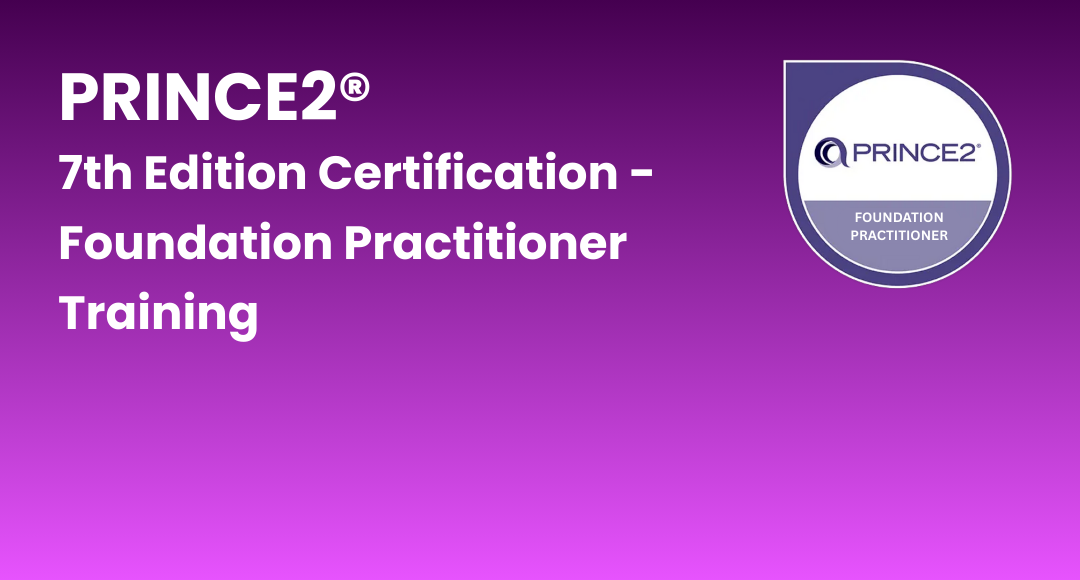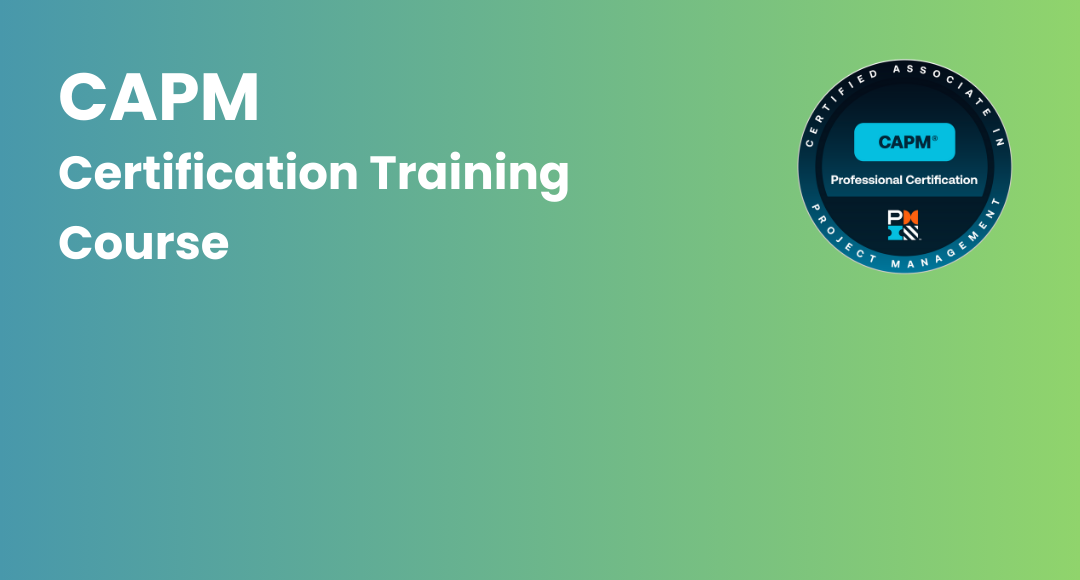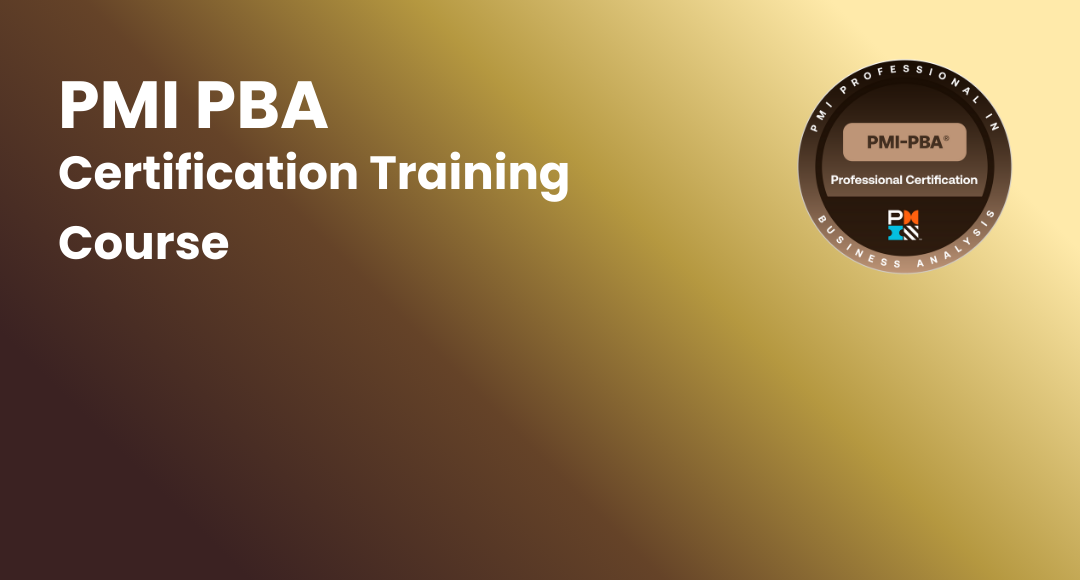Project Risk Management Guide
-
 By Akssar
By Akssar - Published on Aug 8 2022

Table of Contents
- Introduction to Project Risk Management
- What is risk in project management?
- What is risk management in project management?
- How do identify risk in project management?
- What is a risk register in project management?
- What is risk analysis in project management?
- What is risk mitigation in project management?
- Project Risk Management Steps
- Why is risk management important in project management?
Introduction to Project Risk Management
“Everything that can go wrong, will go wrong”, says Murphy’s Law. This is not a negative outlook on life but a call for people to prepare for contingencies. It goes along with the popular idiom “Hope for the best, prepare for the worst”.
This is the kind of approach that is needed in Project Management. Project risk management is an integral part of the project process and a key responsibility of a project manager.
The Japanese have been using this philosophy of project risk management for decades and are credited as being the reason behind the highly reputable delivery and success of Japanese corporates.
In this article, we look at the project risk management process and learn what are the different Project risk management steps.
You can learn more about other essential domains in Project Management from our article on Project Management Knowledge Areas.
What is risk in project management?
Project Management Risk can be described as unexpected events not part of the ideal project process which can have an effect on the desired outcome of the project for better or worse.
A Project management risk could arise out of anything, sometimes completely unrelated to the project. An example of this would be the pandemic, where work across industries was affected due to a global event in no one’s hands.
A project management risk can also affect any of the project's particular facets. This includes personnel, resources, technology, networks, and communication.
There is a distinction between project management risks and project management issues that one needs to remember. Issues are foreseeable and expected events that can affect the project. This includes any leaves by project members, a spike in demand during a certain time of the year, scarcity of certain resources, etc.
The clear distinction is that issues are events you foresee and actively plan for in the project process while project management risks are unforeseen and passively planned for with backup plans.
Although the word risk carries a negative connotation, it is not always bad in the domain of project management. A risk can be both positive and negative, it just needs to be an unforeseeable event that affects the desired outcome of the project.
Some examples of positive project management risks are an increase in product demand size, hiring of new project members, upgradation of technology, etc.
What is risk management in project management?
Project Risk Management is the practice of analyzing processes to identify potential risks and having a risk mitigation plan ready for these risks.
Project managers are typically expected to take charge of the project risk management plan in a company. The project risk management plan needs to be robust and needs to be constantly optimized and updated after every project, even if the process remains the same.
Project Risk management is not one process, but rather a philosophy that guides a series of steps that are a part of the Project Risk Management Plan.
This Project Risk Management plan typically involves steps like identifying, classifying, analyzing, and preparing a risk mitigation plan.
For effective Project Risk Management, the project manager needs to have absolute clarity regarding the product and the process they are expected to deliver. This lays the basis for a strong Project Risk Management plan.
Every project management risk encountered tends to make the team better and the project risk management plan more robust.
This is because by tackling the risk the team learns how to overcome a certain hurdle which makes it way easier when the same risk is encountered again.
This can again be demonstrated by the case of the pandemic which has made organizations around the world capable of working remotely.
This is why companies invest time and money into having effective project risk management strategies in place.
How do identify risk in project management?
One of the key points to remember in the project risk management process is that every risk needs to be identified and dealt with at the earliest possible time.
The longer risk is left unchecked, the more chance it has of disrupting the desired outcome of the project. Left unchecked long enough, the risk might sabotage the entire project.
This is why the process of risk identification in project risk management is very important. Risks identification is to be done at regular intervals all through the project, especially at the point of key milestones.
As a part of the Project risk management plan, the project manager has to prioritize the identification of risks. This is why risk identification is one of the pivotal topics in regular project report meetings.
In risk identification, risks are segregated by source and category.
The risk identification process is carried out from source to source to verify whether a given source is free of risks. Any source that is prone to risks is identified and monitored.
Risk Identification is also done per category of risk to see where the effect is likely to happen. They are broadly categorized and depend on the project type.
This helps form the Risk registry which is a crucial tool used in the project risk management plan.
What is a risk register in project management?
A project risk register, also known as a risk register log, or risk register document, is an important tool in the Project risk management plan that helps etch out the project risk mitigation strategies.
The risk register is crucial to risk mitigation strategies and hence is maintained without fail within any given project.
First, the identified risks are categorized based on various factors like the likelihood of the risk, the impact the risk can have, the process affected by the risk, the source or category the risks occur, etc. The parameters for classification might differ from project to project.
The risk register is initially formed from the findings of the risks identification process. However, the risk register does not stop with the identification of the risks.
Once the risks are categorized, the risk register helps keep track of the preparation to face the identified risks as well.
The categorized risks are analyzed to understand factors like likelihood and impact. The analysis seeks to identify the extent of the effect that the risk can have.
Once the analysis is done and the findings are added to the risk register, the risk mitigation plan can be drawn up. Risk mitigation is the end point of the project risk management plan.
The risk mitigation plan is also added to the risk register. Now the risk register contains identified risks, findings of the analysis of the said risk, and a mitigation plan to deal with the risk.
Now the risk register is continuously monitored and the risks are constantly tracked so that the mitigation plan stays updated as per any developments.
This makes it clear why the risk register is such a pivotal tool in the process of project risk management.
What is risk analysis in project management?
Project risk analysis is an integral part of the project risk management plan. The project risk analysis process is carried out after the risk has been identified and entered into the risk register.
It is important to analyze the identified risks for the impact they can have on the project. Specific analysis is done to see how the outcome of the project can change due to the risk.
This analysis is crucial because the risk mitigation plans are created based on the findings of this analysis.
Some of the data that project risk analysis tries to ascertain is –
Probability of risk – The project risk analysis seeks to understand the mathematical chance of the risk event occurring.
Exposure due to risk – The project risk analysis process tries to find what parts of the project process will get affected by the risk.
Timeframe of risk – Project risk analysis tries to find the window in which the risk is likely to occur to get the project risk management strategies ready in time.
Impact – Project risk analysis tries to calculate the projected impact on the outcome that the risk can have.

What is risk mitigation in project management?
Risk mitigation planning is the practice of having a plan in place to deal with an identified potential risk in a way that the desired outcome is not affected by the risk.
Risk mitigation is the final step in the project risk management plan. It is important to note that not every risk requires mitigation as they are events that may or may not occur.
The risk mitigation strategies are drawn based on the findings of the risk analysis. The mitigation plan is charted by the project manager by referring to the data entered on the risk register.
The project risk analysis process provides all the necessary data that is required to prepare a mitigation plan. All this data is available from the risk register.
Once the mitigation plan is prepared, it is entered into the risk register alongside the data from the project risk analysis.
All the risks in the register are monitored periodically to ensure risk is detected as soon as it occurs. The risk analysis report is constantly updated based on the findings of this monitoring.
In case the risk occurs, the mitigation plan is executed to ensure that the project outcome is not affected.
The execution of a mitigation plan to safeguard the desired outcome of the project is the main purpose of Project risk management.
Project Risk Management Steps

1) Risks identification – The first of the Project risk management steps is the identification of risks.
2) Preparing risk register – A log is made to categorize the identified risks to further plan project risk management.
3) Risk analysis – The risks entered in the risk log are analyzed to find data that can further help the project risk management plan.
4) Updating the register – In this step of project risk management, the data from project risk analysis is updated on the risk log.
5) Preparation of risk mitigation plan – The purpose of project risk management is to have a risk mitigation plan ready before the risk event occurs.
6) Updating the register – The risk mitigation plan is updated on the risk log to have the project risk management plan in place.
7) Monitoring of risks – To ensure timely implementation of the risk mitigation strategies, the risks are monitored periodically by the project risk management plan.
8) Prioritizing risks – The next step in project risk management is the prioritization of risks based on the findings of monitoring.
9) Execution of risk mitigation plan (If the risk occurs) – If the dreaded risk event occurs, as per the project risk management plan, the risk mitigation strategies in place are executed to control the risk and safeguard the desired result of the project.
Why is risk management important in project management?

The aim when undertaking any given project is to deliver the desired outcome to clients. This is done by planning the project in the most efficient way possible using various optimization techniques.
The problem with highly efficient systems is that they are highly vulnerable to unforeseen events and tend to crash easily.
An example of this would be the supply chain crisis during the pandemic which led to unusually high prices of the otherwise easily available commodities.
Learn more about project risk management by joining Sprintzeal’s reputed PMP certification training program and kickstart your lucrative career as a project manager. Sprintzeal is an authorized training partner recognized by PMI.
Subscribe to our Newsletters
Popular Programs
CAPM® Certified Associate Project Management
Live Virtual Training
- 4.8 (962 + Ratings)
- 50k + Learners
Trending Posts
WBS Dictionary - A Beginner's Guide
Last updated on May 19 2023
Project Management Tips - Best of 2026
Last updated on Jul 23 2024
Wipro Project Management: Core Lessons from Tech Giant
Last updated on Dec 4 2024
Remote Project Management Success: Key Strategies and Career Opportunities
Last updated on Mar 27 2025
Digital Project Manager – Skills, Salary, and Scope
Last updated on Apr 14 2023
What is a Risk Management Plan? A Comprehensive Guide
Last updated on Mar 13 2023
Categories
- Other 69
- Agile Management 45
- Cloud Computing 56
- Project Management 172
- Big Data 66
- Business Management 88
- Digital Marketing 78
- IT Service Management 29
- Programming Language 58
- AI and Machine Learning 76
- IT Security 112
- Quality Management 78
- IT Hardware and Networking 25
- Microsoft Program 4
- Workplace Skill Building 13
- Risk Management 9
- Information Security 8
- Leadership and Management 9
- Corporate Training and Development 1
Trending Now
Issue Log in Project Management - Uses and Importance
ArticleSupply Chain Response And The Factors Involved In It
ArticleBest Agile tools for Project Managers in 2026
ArticlePMI-PMP® Exam Changes Explained in 5 Minutes
ebookProject Initiation Phase - Importance and Roles Involved
ArticleDelphi Technique and Its Role in Project Management
ArticlePMBOK Guide and Project Management Certification Updates 2026
ArticleHow to Use Google Calendar as a Project Management Tool
ebook10 Reasons Why You Should Get PRINCE2 Certification
ArticleCAPM Cheat Sheet 2026
ArticleCAPM Certification Study Guide
ArticleCAPM Certification Exam Preparation Guide 2026
ArticleTop Benefits of CAPM Certifications
ArticleGuide to Advancing Project Management Career with PMP Certification
ArticlePMP Vs PRINCE2 - Which Project Management Certification is Better?
ebookProject Management Interview Questions and Answers for Managers
ArticleProject Management Software to Use in 2026
ebookBest project management certifications in 2026
ArticleProject Feasibility Study in Seven Steps
ArticleCAPM vs PMP – Which Project Management Certification Is Better?
ArticleProject Scope Management Guide 2026
ArticleProject Management Complete Guide 2026
ArticleCAPM Exam – Difficulty, Details and Preparation Tips
ArticleWhat is Project Management?
ArticleIs it worth getting the CAPM certification?
ArticleIs PMP Better than MBA?
ebookWhat is PMI ACP certification?
ArticleIs PMP exam difficult?
ArticleIs PMI ACP worth it?
ArticlePMP or CAPM – which is better?
ArticleWhat is pass percentage for the CAPM exam?
ArticlePMP or PMI ACP – which certification should you get?
ArticlePMP Certification Cost Details
ArticleHow to get PMP certification - Guide 2026
ArticleHow to create an effective project plan
ArticleTop Project Manager Interview Questions and Answers 2026
ArticleGuide to Change Management for Organizational Transformation
ArticleResource Manager Interview Questions and Answers 2026
ArticleTop Project Manager Qualifications and Career Path in 2026
ArticleNetwork Diagram - Types, Topology and Use in Project Management
ArticleProject Management Life Cycle and Its Phases
ArticleGuide to Project Management Processes, Methodologies and Lifecycles
ArticleProcess Capability Analysis Explained
ArticleFinancial Risk and Its Types
ArticleConstruction Project Management - Roles, Stages and Benefits
ArticleRisk Management Strategies in Project Management
ArticleProject Management Principles - 12 Essentials
ArticleProject Management Framework Guide
ArticleStrategic Management Guide 2026
ArticleProject Management Books List - Best of 2026
ArticleProject Documentation and Its Importance
ebookProject Management Tips - Best of 2026
ArticleProject Management Apps Best of 2026
ArticleDigital Project Manager – Skills, Salary, and Scope
ArticleProject Communication Plan – How to Create and Use
ArticleEarned Value Management and Its Significance
ArticlePlanning Poker Estimation Technique
ArticleProject Management vs Product Management
ArticleProject Crashing in Project Management
ArticleProject Controlling and its Importance in Project Management
ArticleProject Report and its Significance in Project Management
ArticleEstimate at Completion - Formulae and Calculations
ArticleProject Cost Management Guide 2026
ArticleProduct Lifecycle Management
ArticleProject Portfolio Management Guide
ArticleProgram Manager vs Project Manager - Comparison of Roles and Careers
ArticleWBS Dictionary - A Beginner's Guide
ArticleStakeholder Analysis and Stakeholder Management Guide
ArticleProject Management Phases Explained
ArticleProject Management Knowledge Areas
ebookLeadership Theories for Managers
ebookPMP Pass Rate in 2026 - Guide to Clear the PMP Exam
ebookProject Schedule Management Guide for Beginners
ebookProject Integration Management Guide
ArticleProject Resource Management Guide
ArticleProject Quality Management Guide
ArticleProject Procurement Management Guide
ArticleProject Deliverables in Project Management
ebookConflict Resolution in Project Management
ebookPERT vs CPM in Project Management
ebookGantt Charts - The Ultimate Guide
ebookWork Breakdown Structure in Project Management
ebookTop Gantt Chart Makers in 2026
ebookGantt Chart Tools - Best of 2026
ebookHow to create a work breakdown structure
ebookProject Manager Resume Guide – Best Tips and Examples
ebookProduct Management Frameworks - The Ultimate Guide 2026
ebookProduct Planning - A Beginner's Guide
ebookWhat is Product Management? - A Beginner's Guide
ebookGuide to Project Stakeholder Management
ebookPMP® Certification Salary: Job and Salary Scope in 2026
ebookTop Project Engineer Skills
ebookGuide to Technical Project Management
ebookTop 10 project management competencies
ebookNegotiation in Project Management: The Utimate Guide
ebookTime Management in Project Management - Steps to Implement it
ebookTop Program Manager Skills of Successful Program Managers
ebookA Brief Guide to Conflict Management Approaches
ebookWhat is a Risk Management Plan? A Comprehensive Guide
ebookWorkflow Diagram - Steps to Create, Symbols, Types, and Uses
ebookBest Practices to Measure Resource Utilization
ebookWorkload Management: How to Optimize Your Team’s Workload?
ebookWhat is Project Execution? A Comprehensive Guide
ebookProject vs Program Management: Key Differences
ebookKanban Methodology in Project Management – A Complete Guide
ebookHybrid Project Management Guide 2026
ebookProject Characteristics: Key Elements in a Project
ebookThe Ultimate Guide to the Waterfall Methodology in Project Management
ebookProject Budget: Definition, Overview & How to Create One
ebookThe Ultimate Project Kickoff Meeting Guide
ebookProject Timeline: How to Build One, Definitions, and Examples
ebookProject Scope Statement: How to Write One With Example
ebookStatement of Work in Project Management Guide 2026
ebookProject Management in Product Development : Essential Role
ebook10 Best Change Management Tools to Use
ebookMastering Resource Scheduling to Unlock Project Success
ebookProject Risk Analysis: Tools, Templates & Best Practices
ebookHow to Write a Project Summary: Four Easy Steps
ebookTop Leadership Skills: Mastering the Art of Effective Leadership
ebookHow to Write a Project Descriptions: A Step-by-Step Guide
ebookWhat is Project Monitoring? A Comprehensive Guide
ebookWhat Are Project Fundamentals? A Quick Guide
ebookKanban Board: A Detailed Guide to Understanding and Usage
ebook10 Effective Management Styles for Leaders (With Real-Life Examples)
ebookProduct Manager Career Path: What to Expect
ArticleCareer Path for Program Manager - Strategic Navigation for Professional Growth
ebookExploring Career Path for Product Owner
ebookAn Ultimate Guide to Project Coordinator Career Paths
ebookHow to Become an ISO 21502 Lead Project Manager
ArticleWhat are the Basics of ISO 21502 Foundation? A Brief Guide
ebookThe Role and Responsibilities of an ISO 20400 Lead Manager
ArticleEnergy Saving Standards and ISO 50001 Best Practices
ebookComparing Different ISO Certifications for Project and Energy Management
ebookGuide to ISO Certifications for Effective Project and Energy Management
ArticleWhy ISO 50001 is the Perfect Match for Energy Efficiency?
ArticleAI Tools for Project Managers: A Game Changer for Project Success
ArticleAbout Disney’s Project Management: Where Magic Gets Real
ArticleMcDonald's Recipe to Success - A Perfect Project Management Case Study
ArticleToyota’s Project Management: A Road to Greatness and Innovation
ArticleNetflix's Binge-Worthy Project Management
ebookUnder Armour’s Project Management Approach
ArticleWipro Project Management: Core Lessons from Tech Giant
ArticleProject Management at Google: Tools and Success Stories
ArticleCoca-Cola Project Management Strategy and Key Insights
ArticleAI in Project Management: Transforming the Future of Work
ArticleBehind the Scenes: How Apple Executes Projects with Flawless Precision
ArticleTesla's Advanced Project Management: Accelerating the Future
ArticleBeats to Business: Spotify's Project Management to Redefine Music
ArticleTop AI Project Management Software to Elevate Your Workflow
ArticleProject Management Office: Step-by-Step Guide to Start a PMO
ArticleWhat is a Project Management Information System?
ArticleHow Microsoft Balances Innovation and Project Management?
ArticleWhat is Agile Project Management? A Beginners Guide
ArticleIKEA Project Management: What to Learn and Stay Competitive
ArticleHow Did Nike Become a Global Leader?
ArticleIntel's Master Project Management Formula
ArticleSamsung Pioneer in Project Management: The Secret Behind It
ArticleAmazon Logistics Strategies That Dominate Retail
ArticleRemote Project Management Success: Key Strategies and Career Opportunities
ArticleStreamlining Workflows: The Best Digital Tools for Professionals
ArticleUnderstanding the Financial Risks in Sponsorships and How to Avoid Them
Article3 Real Disasters That Teach Critical Project Risk Planning Lessons
ArticleInterview scheduling automation: Streamlining the candidate experience
Article3 Quality Gaps That Can Ruin Your Project Outcomes
ArticleBest 4 Construction Drawing Management Tools to Boost On-Site Efficiency
ArticleEssential Jira Interview Questions for 2026
ArticleProduct Development Cycles That Keep Innovation on Schedule
ArticleSmarter Projects with AI
ArticleLegal Project Management for PMs: A Practical Starter Guide
ArticleProject Manager Job Description: Roles, Responsibilities, and Skills
ArticleProduct Analyst Job Description – Key Duties and Career Path
Article
